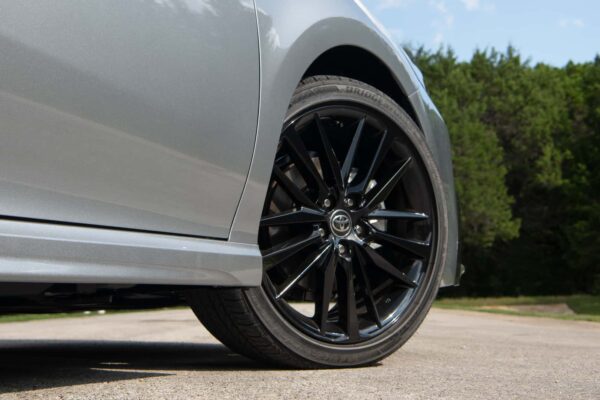Do you believe that the McLaren modern line of the “long” stranger is really 10 years old? It seems only yesterday, we saw 675 liters for the first time, which is the 650s hard -line version, which was revealed to the public at the Geneva Motor Show.
The LT title has made a long time since then. Three years after 675 came 600 liters, a lighter version of Aero-Laden from the already excellent 570s. Then, in 2020, it came 765 liters, a missile on wheels dependent on the nearby 720s.
The long name is steeped in history. Like any good trim for sports cars, their origins can be found in the race, in 24 hours of Lowan. But the name has made more date since then, as it dominated comparative tests and lining groups in the form of the above cars.
Soon, these small letters became a symbol of the best McLaren. Using 765 liters as a lens, let’s take a look at how this happens.
Long history
Al -Taweel’s name first returned in 1997, when the UK was still governing Hong Kong and Princess Diana was alive. McLaren, hot on the butt His general victory In 1995 for 24 hours of Loman, she realized that her rival was moving away from the F1 GTR, where he sat with a semi -production structure.
After some relaxation of FIA homogeneous rules, which allowed more development as long as one road model was produced, McLaren made some important changes on the F1 GTR for the 1997 GT championship. The redesigned shape – which was largely reformulated forward forward – has been clouded and increased the lower power, while at the same time made the car easier to drive.
“I didn’t drive a ’95 or 96 at the time, but I have recently, and the long is a tremendous development,” said Chris Godwin, a former chief test driver in McLaren. “Although you have to drive within the previous GTRS limit and are more sensitive, the long length encourages you to be more aggressive, so that you can brake deeper and outperform it immediately. Of course, this leads to a faster time.”
McLaren F1 GTR Longtail Chassis 20R, who won the Le Mans chapter in 1997.
The new body lines, associated with a loss of 220 pounds and sequential transportation instead of H-Pattern Manual, did not ask about the competitiveness of F1. That year, it took control of the FIA GT championship, and won five of 11 races. the F1 GTR LongTail It also finished the second and the third in Loman, where he finished first and second in the chapter.
Longtail’s legend was born and was immediately strengthened in history books.
Tail of the modern tall
All, McLaren built 13 F1S students, 10 GTR and three road cars. Despite the low production numbers with F1, the long long name has flourished to a full model line in the McLaren range, aimed at representing the most extreme and extreme cars offered by the company.
McLaren was tending to be legendary as a race car, and he had a bright idea to revive the long name in 2015, 18 years after it appeared for the first time. But instead of giving the name on another race car, the company built 1000 cars. 675lt The original purpose is to be more capable of the race track, with a lower weight and improving aerodynamics. Oh, a longer tail.
McLaren managed to reduce 220 pounds of 650s thanks to more carbon panels, lighter wheels, new exhaust system, carbon Aquarius and a plastic rear window. The lightest hydraulic hydraulic suspension has been re -suspended, while Aero balance was re -calculated for the longest and deep superstar at the foreground.
The original tail has spanned 25.0 inches longer than the standard F1. However, 675 liters are only 1.5 inches from 650s. Although visual change was almost unique, the jump in performance was clear. The 3.8-liter V-8 turbocharged, which has been seized on 666 horsepower, connects the carbon ruling to 60 miles per hour in just 2.9 seconds, at a top speed of 205 miles per hour.
In our original review, we called 675lt “a quick car capable of mockery”, which is also “exploitable and attractive, whether in the path of the circle, or outside the road in daily driving.”
A successor deserves the original, then.
The second modern McLaren to hold the LT title, 600 litersIt was more than the same. I used a similar formula, stripping 211 rugs with lighter equipment and more carbon. It was also based on the additional aerobic dynamics to improve the lower power and put faster times. Of course, he had more power: 592 hp of 3.8-liter V-AUT 30 hp from 570.
600 liters were faster to 60 miles per hour, able to put only 2.8 seconds when using the release control. But the straight speed was not the largest achievement. In our first campaign from 2018, we called 600 liters “it can be said that the best producer of the company ever” praised its balance, feeling and accuracy.
McLaren 600LT.
Then, in 2018, it came 765 liters. A shipment copy of 720s, rewritten the book about the extent of the supercar. For McLaren, it was possible to rinse and repeat it: take out the weight, then add energy and landing. But this time, the company did more to distinguish the long.
In addition to all the light and metaphysical strength, McLaren also added a new dual -clutch transition with a shorter gears and complex carbon brakes from Sina. Forget a missile on wheels. With a curbing weight less than 3000 pounds and 755 hp under your foot, 765 is a group of trained railways on the next corner, ready to detonate them into pieces.
It was the first time that I drove 765 liters in 2020, when I managed only two Lime Rock Park – the circle that I discovered at a very small speed for a quick car like this car was disrupted. The rectum was erased in seconds, and it was also angles, if you know what you were doing.
Even after five years, the latest tall tail is a mind. His leadership in the street is a continuous exercise in restraint, the lack of an audio comment and a super -successful comment reminds you of every foot of the travel that this car is supposed to be flat at all times.
Photo: Brian Silvulu / Motor 1
Photo: Brian Silvulu / Motor 1
Photo: Brian Silvulu / Motor 1
Once the road opens, though, 765 liters is revelation. Even at the age of five, she is not flawless in its delivery, with only a second of the Torus delay and three football fields are released. The guidance is perfection. With hydraulic help and a thin wheel to arrest her, wondering competitors did not copy home LT duties here.
The true beauty lies in controlling the 765 structure and non -weight. Heavier cars can also handle it, but in the end they feel more synthetic, hiding behind a set of technology to make the same angle or reach the same speed. Here, there is still purity that you can feel when the wheel flies. This is due to all carbon fibers and unrelated suspension, which uses hydraulic communications instead of traditional effect bars.
But such F1 GTR of 1997, 765 liters remains an indefinite friendly at those high speeds. Despite the amount of energy to the huge weight, short gears, and eye brakes, they are never frightened or overwhelmed. This long spirit is still the same, even after all this time.
Longtail future
Through the three modern LTS, there is a series of constants. Everyone depends on light weight, more horse, and the largest aerobic dynamics to pay the performance envelope. More importantly, these changes come without prejudice to the driver’s pleasure. It brings any upgrade to the joy of the person in the driver’s seat, whether it is joking across their local back path or pushing for the best character in the race track.
Photo: Brian Silvulu / Motor 1
There is definitely more long length on the horizon. The current Artura of McLaren and 750s, which use themselves many learning from 600 liters and 765 liters, have no yet their LT variables. When these cars arrive, you can make sure they will carry the same spirit of this original race from the nineties: less weight, more sharing, and longer tail.



